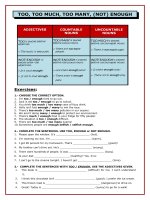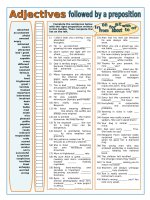islcollective worksheets intermediate b1 adults high school reading reading comprehension ex asean 1666843843577d2407511988 31498687
Bạn đang xem bản rút gọn của tài liệu. Xem và tải ngay bản đầy đủ của tài liệu tại đây (57.1 KB, 1 trang )
ASEAN
The historical document, which was considered the declaration
of the Association of Southeast Asian Nations (ASEAN), was
signed on 8 August 1967 by five leaders – the Foreign
Ministers of Indonesia, Malaysia, the Philippines, Singapore
and Thailand. That’s why the traditional day of this
organisation is 8th August. The aims and purposes are
cooperation in economic, social, cultural, technical, educational and other fields, and in the
promotion of regional peace and stability. The original ASEAN logo presented ten brown
sheaves of rice stalks, one for each founding member. Beneath the sheaves is the legend
“ASEAN” in blue. These are set on a field of yellow encircled by a blue border. Brown
stands for strength and stability, yellow for prosperity and blue for the spirit of cordiality in
which ASEAN affairs are conducted.
The ASEAN Flag represents a stable, peaceful, united and dynamic ASEAN. The colours of
the Flag – blue, red, white and yellow – represent the main colours of the flags of all the
ASEAN Member States.
The blue represents peace and stability. Red depicts courage and dynamism, white shows
purity and yellow symbolises prosperity.
Now, there are ten member states including Brunei Darusalam, Cambodia, Indonexia,
Malaysia, Laos, Myanma, the Philippines, Singapore, Thailand and Vietnam.
ASEAN is now at the centre of a dynamic Asia-Pacific region with the population of about
626 million and more than 1.7 million square kilometers. It is also considered to be one of
the largest market economies in the world.
Questions
1. What is Asean day?
2. Who were the first memer countries of this organisation?
3. How many colors are there in Asean’s flag?
4. How many members are there now?
5. What does the word “ASEAN” stand for?









